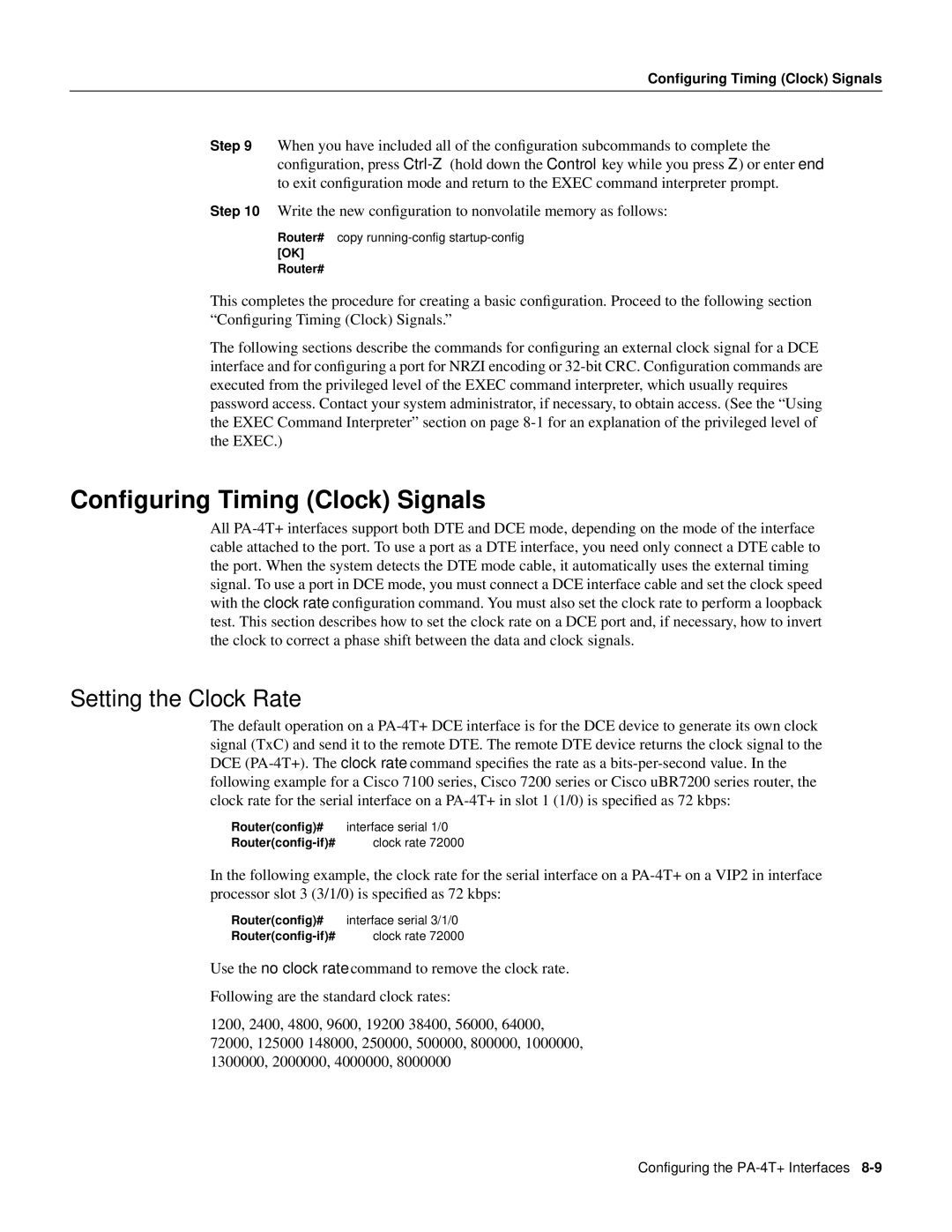Configuring Timing (Clock) Signals
Step 9 When you have included all of the configuration subcommands to complete the configuration, press Ctrl-Z(hold down the Control key while you press Z) or enter end to exit configuration mode and return to the EXEC command interpreter prompt.
Step 10 Write the new configuration to nonvolatile memory as follows:
Router# copy running-config startup-config
[OK]
Router#
This completes the procedure for creating a basic configuration. Proceed to the following section “Configuring Timing (Clock) Signals.”
The following sections describe the commands for configuring an external clock signal for a DCE interface and for configuring a port for NRZI encoding or 32-bit CRC. Configuration commands are executed from the privileged level of the EXEC command interpreter, which usually requires password access. Contact your system administrator, if necessary, to obtain access. (See the “Using the EXEC Command Interpreter” section on page 8-1 for an explanation of the privileged level of the EXEC.)
Configuring Timing (Clock) Signals
All PA-4T+ interfaces support both DTE and DCE mode, depending on the mode of the interface cable attached to the port. To use a port as a DTE interface, you need only connect a DTE cable to the port. When the system detects the DTE mode cable, it automatically uses the external timing signal. To use a port in DCE mode, you must connect a DCE interface cable and set the clock speed with the clock rate configuration command. You must also set the clock rate to perform a loopback test. This section describes how to set the clock rate on a DCE port and, if necessary, how to invert the clock to correct a phase shift between the data and clock signals.
Setting the Clock Rate
The default operation on a PA-4T+ DCE interface is for the DCE device to generate its own clock signal (TxC) and send it to the remote DTE. The remote DTE device returns the clock signal to the DCE (PA-4T+). The clock rate command specifies the rate as a bits-per-second value. In the following example for a Cisco 7100 series, Cisco 7200 series or Cisco uBR7200 series router, the clock rate for the serial interface on a PA-4T+ in slot 1 (1/0) is specified as 72 kbps:
Router(config)# interface serial 1/0
Router(config-if)# clock rate 72000
In the following example, the clock rate for the serial interface on a PA-4T+ on a VIP2 in interface processor slot 3 (3/1/0) is specified as 72 kbps:
Router(config)# interface serial 3/1/0
Router(config-if)# clock rate 72000
Use the no clock rate command to remove the clock rate.
Following are the standard clock rates:
1200, 2400, 4800, 9600, 19200 38400, 56000, 64000, 72000, 125000 148000, 250000, 500000, 800000, 1000000, 1300000, 2000000, 4000000, 8000000
